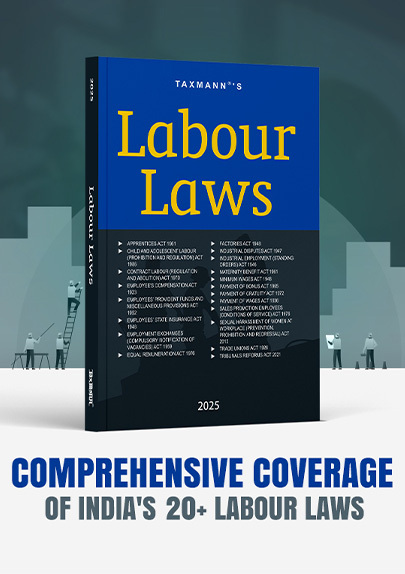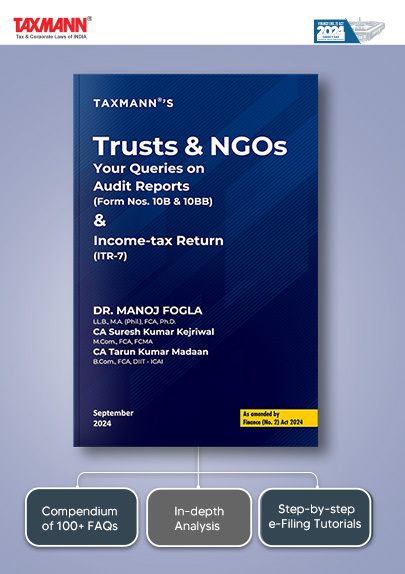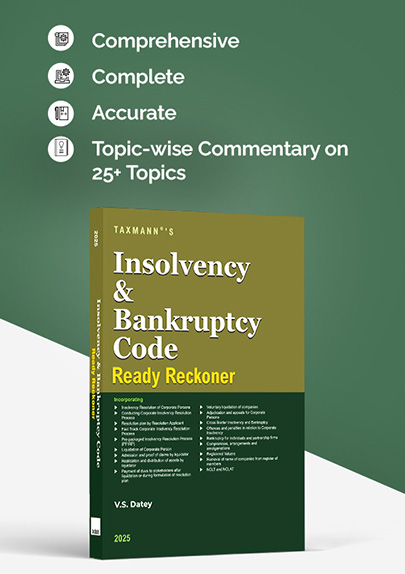[Opinion] Gifts | A Comprehensive Analysis of an Everlasting Tax Planning Tool
- Blog|News|Income Tax|
- 4 Min Read
- By Taxmann
- |
- Last Updated on 25 December, 2024
Navneet Singal – [2023] 155 taxmann.com 246 (Article)
Gifts have always been subject to taxation in one form or another around the world, and India is not exempt from it. Milton Berle has quoted that, “Santa is having a tough time this year. Last year, he deducted eight billion for gifts, and the IRS wants an itemized list”, shows the spread of gift transactions worldwide and the focus of revenue authorities on the same.
Legislators have long debated the taxation of gifts because, in situations where concealed assets were found, the assessee would argue that the assets were gifts received and therefore free from taxation. In order to address this issue, legislation was put into place to ban specific behaviours, allowing for the taxation of such gift receipts while also exempting extremely small gift amounts, family gifts, and gifts given on specific dates. Understanding how the government intends to tax the gift, what exemptions are available, and how we can take advantage of the concessions granted by statute to reduce the tax liability becomes critical.
In this article, the author has attempted to analyse the different scenarios of transfer of assets between related and unrelated persons without consideration or inadequate consideration, amid the applicability of different sections of the Income-tax Act, 1961 (‘the Act’) and other statutes, under the following headings:
I. Brief history of taxation of gifts in India
II. Applicability of the tax on the Gift
III. Exemption from tax on transaction with Nil or inadequate consideration (Gift)
IV. Interplay of clubbing provisions and capital gain provisions
V. Valuation of gifts
VI. Specific cases related to gift transactions
(a) Gift by non-resident to resident and vice-versa
(b) Gift received from abroad or properties situated outside India
(c) Gift of Immovable Property which is not a Capital Asset, i.e., rural agricultural land
(d) Taxability of amount received as Alimony
(e) Benefits/Gifts by employer to employees including ESOP
(f) Applicability of TDS on gifts
(g) Interest free loans
(h) Property transferred as gift becomes stock-in-trade for Donee
(i) Whether Gifts can be considered as cash credit u/s 68 of the Act
(j) Whether Section 269ST is Applicable on Cash Gifts
VII. Conclusion
I. Brief history of taxation of gifts in India
The history of Indian culture dates back thousands of years, and there are many different customs associated with it. India is a nation with a diverse culture where every occasion is cause for celebration and an opportunity to express love and affection to close family and friends. On several occasions, including Diwali, Raksha Bandhan, Christmas, and New Year’s, gifts are given and received. Additionally, some individuals view gifting as a status symbol.
It is important to understand the meaning of the term “gift”. The Income-tax Act, 1961 (‘the Act’), or GST Act, 2017 has not specifically defined the term “gift”. Section 2(xii) of the repealed Gift Tax Act, 1958 (the GTA) defines
“Gift as the transfer by one person to another of any existing movable or immovable property made voluntarily and without consideration in money or money’s worth.”
Thus, a gift is a gratuity and an act of generosity and does not require consideration. If there is consideration for the transaction, it is not a gift. Love, affection, spiritual benefit, and many other factors may enter into the intention of the donor to make a gift, but these considerations cannot be called or held to be legal considerations as understood.
Tax on gifts was introduced in India in 1958 by the Gift Tax Act, which was subsequently amended and repealed in the year 1987 and 1998, respectively. Till October 1, 1998, all gifts (including gifts to relatives), barring a few exceptions, were chargeable to Gift Tax in the hands of the Donor under the Gift Tax Act. The period from October 1998 until March 2004 was without any tax on gifts. However, the gift tax was reintroduced in a new form to fill up the vacuum created by the abolition of the Gift tax Act, 1958 and the provisions were included in the Income-tax Act vide Finance (No. 2) Act, 2004, w.e.f. 1.4.2005. The remarkable difference is that under the old law, gifts were taxed in the hands of the donor, while under the current law, the same is taxable in the hands of the donee or recipient of the gift as income from other sources u/s 56 of the Income Tax Act, 1961.
In short, the provisions relating to tax on such receipts can be described as follows:
| Legislation | Period | Taxability |
| GTA, 1958 | Up to 30/09/1998 | in the hands of the donor if amount of gift exceeded Rs.30,000 in a year |
| – | 01/10/1998 to 31/08/2004 | No tax on such sum |
| U/s 56(2)(v) of Income-tax Act | 01/09/2004 to 31/03/2006 | only sum of money if the same exceeds Rs.25,000 from each person (Individual or HUF) |
| U/s 56(2)(vi) | 01/04/2006 to 30/09/2009 | only sum of money if the same exceeds in aggregate Rs.50,000 in a year in the hands of the recipient from all donors (Individual or HUF) |
| U/s 56(2)(vii) | 01/10/2009 to 31/03/2017 | Taxable Receipt of sum of Money, Immovable property as well as certain specified movable property if the amount exceeds Rs.50,000 in aggregate in case of each of such category of assets (Individual or HUF) |
| U/s 56(2)(viia) | 01/6/2010 to 31/03/2017 | Partnership Firms and companies in which public are not substantially interested when shares of specified companies are received without consideration or at inadequate consideration |
| U/s 56(2)(x) | 01/04/2017 onwards | Provisions applicable as of now – Tax is applicable to all irrespective of their status and residency subject to certain thresholds and conditions. (Discussed in detail) |
Click Here To Read The Full Article
Disclaimer: The content/information published on the website is only for general information of the user and shall not be construed as legal advice. While the Taxmann has exercised reasonable efforts to ensure the veracity of information/content published, Taxmann shall be under no liability in any manner whatsoever for incorrect information, if any.

Taxmann Publications has a dedicated in-house Research & Editorial Team. This team consists of a team of Chartered Accountants, Company Secretaries, and Lawyers. This team works under the guidance and supervision of editor-in-chief Mr Rakesh Bhargava.
The Research and Editorial Team is responsible for developing reliable and accurate content for the readers. The team follows the six-sigma approach to achieve the benchmark of zero error in its publications and research platforms. The team ensures that the following publication guidelines are thoroughly followed while developing the content:
- The statutory material is obtained only from the authorized and reliable sources
- All the latest developments in the judicial and legislative fields are covered
- Prepare the analytical write-ups on current, controversial, and important issues to help the readers to understand the concept and its implications
- Every content published by Taxmann is complete, accurate and lucid
- All evidence-based statements are supported with proper reference to Section, Circular No., Notification No. or citations
- The golden rules of grammar, style and consistency are thoroughly followed
- Font and size that’s easy to read and remain consistent across all imprint and digital publications are applied






 CA | CS | CMA
CA | CS | CMA


